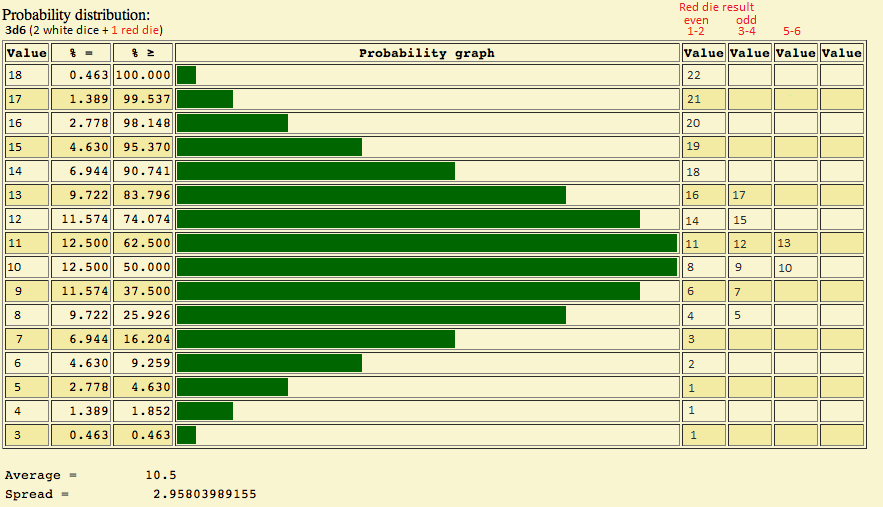Thomas Bowman
First Post
Here is a chart for approximate conversions between d20 rolls and 3d6 rolls:

A short little explanation in in order.
For everything we'd ordinarily roll a d20 for we roll 3d6s instead, not just any 3d6s but specifically 2d6 consisting to two white dice plus 1 red d6, you add them up normally to get the result, but for the middle range, you consult the red die if there are two possible d20 values for one 3d6 result you check to see if the red die result is either an even or an odd number, if there are three possible values you check the red die to see if it is on the range of 1-2, -4, or 5-6 to determine which one. The advantage of rolling 3d6s is that it extends the range to 22, though the changes of rolling an 18 to get the equivalent of 22 is small, 1 in 216 for an unmodified 3d6 roll. The usual rules apply, a 3 instead of a 1 is an automatic miss or failure and an 18 is an automatic hit or success. The chances of rolling a 3 or an 18 on a 3d6 are smaller than rolling a 1 or a 20 on a 1d20. What do you think of this?

A short little explanation in in order.
For everything we'd ordinarily roll a d20 for we roll 3d6s instead, not just any 3d6s but specifically 2d6 consisting to two white dice plus 1 red d6, you add them up normally to get the result, but for the middle range, you consult the red die if there are two possible d20 values for one 3d6 result you check to see if the red die result is either an even or an odd number, if there are three possible values you check the red die to see if it is on the range of 1-2, -4, or 5-6 to determine which one. The advantage of rolling 3d6s is that it extends the range to 22, though the changes of rolling an 18 to get the equivalent of 22 is small, 1 in 216 for an unmodified 3d6 roll. The usual rules apply, a 3 instead of a 1 is an automatic miss or failure and an 18 is an automatic hit or success. The chances of rolling a 3 or an 18 on a 3d6 are smaller than rolling a 1 or a 20 on a 1d20. What do you think of this?
